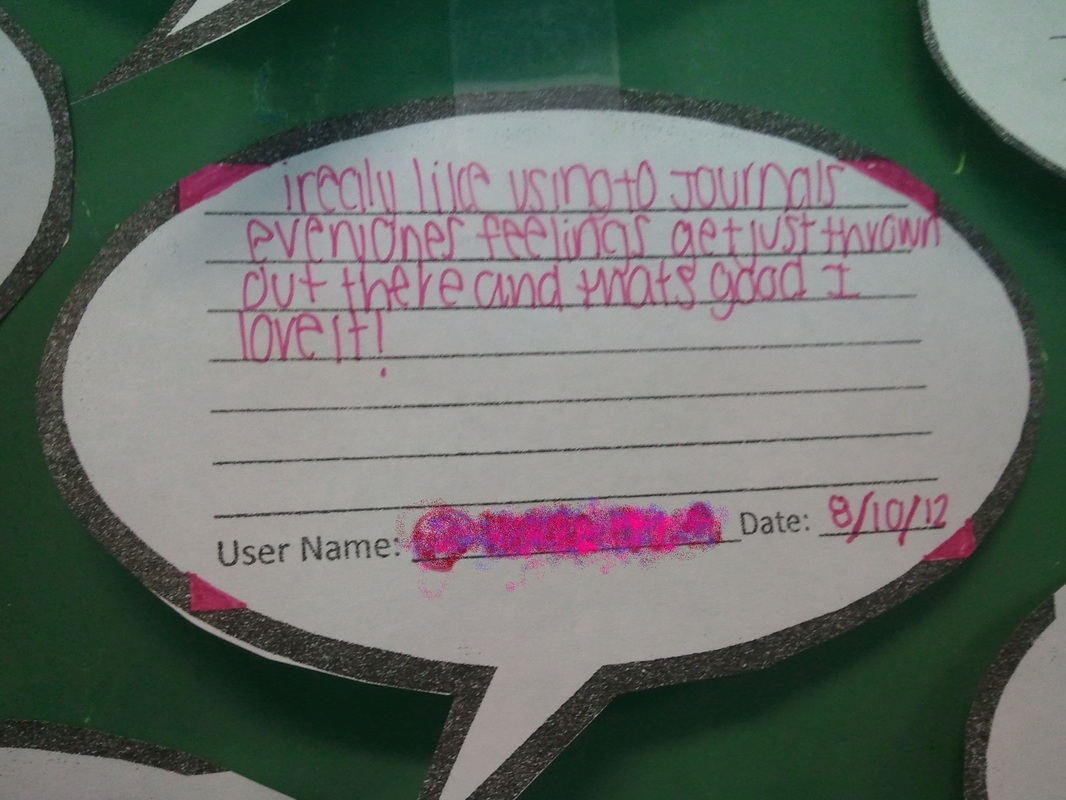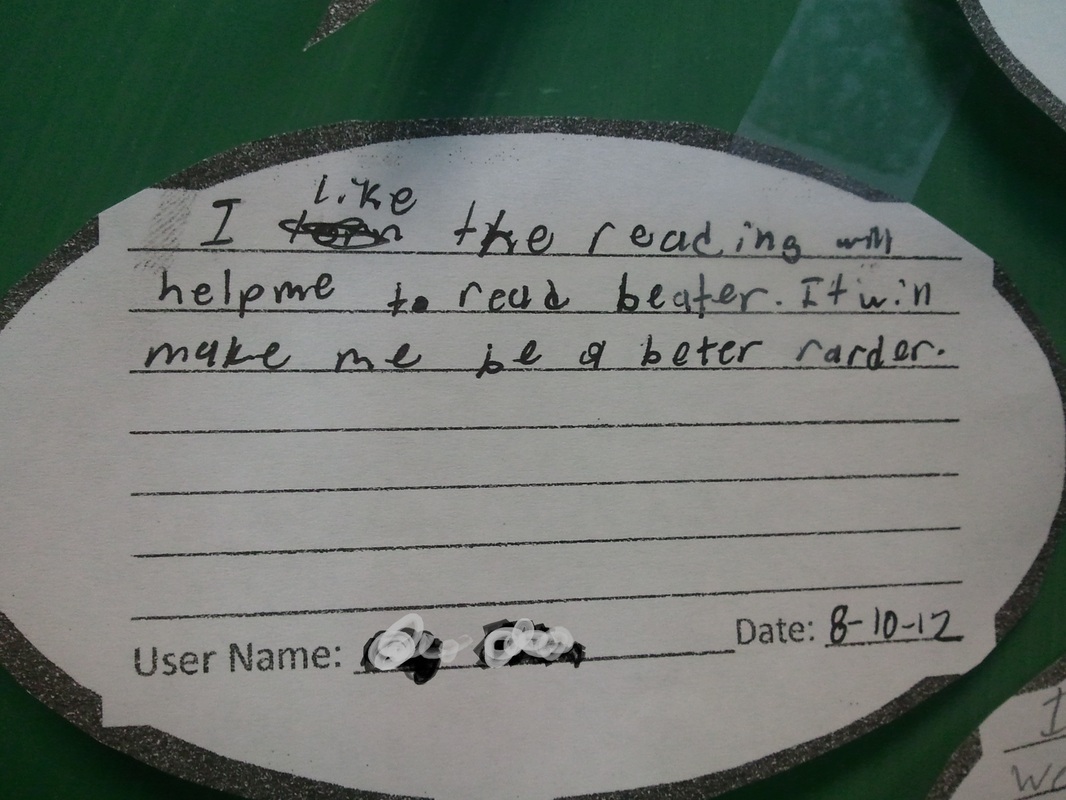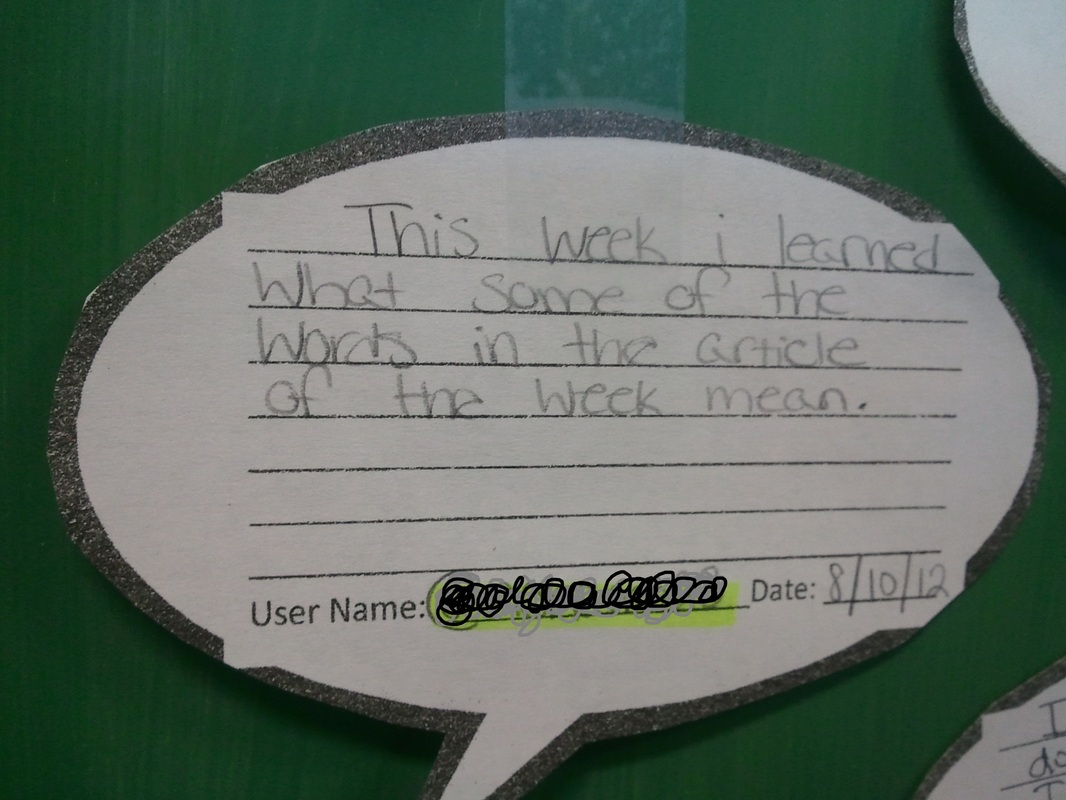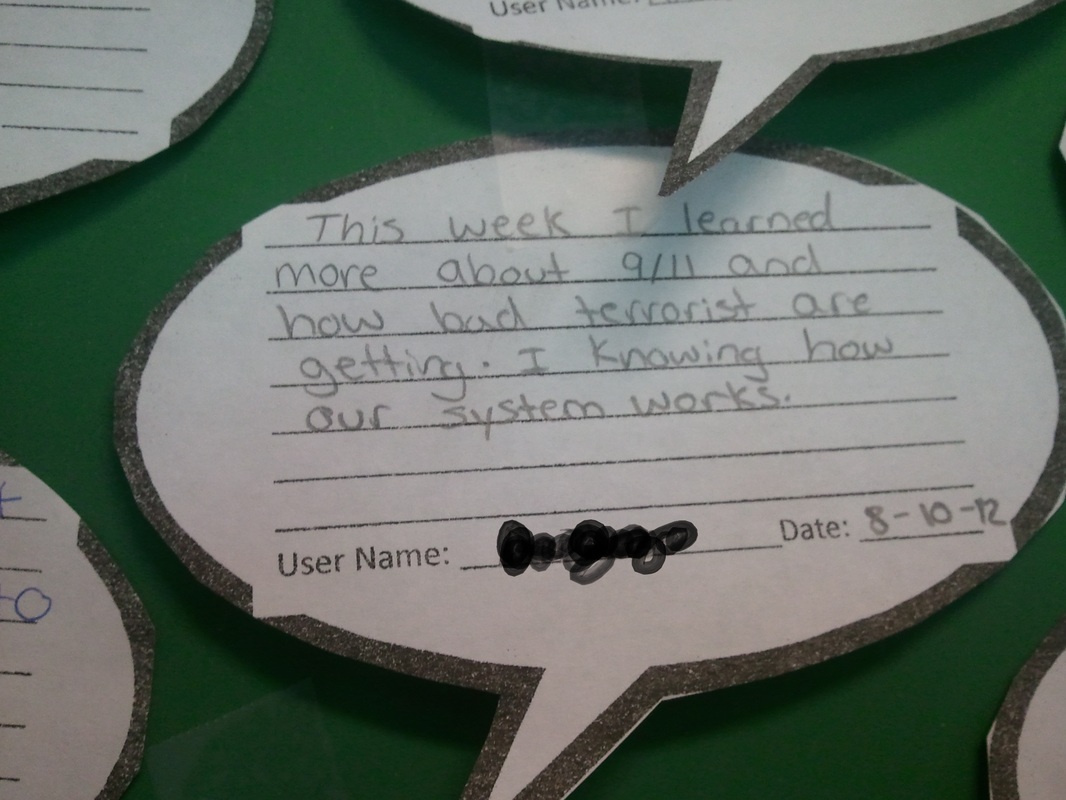One of the centers of conversation at the Teacher Leadership Institute I attended in West Virginia this year had this focus: the R's of learning are changing. Instead of the old "reading, 'riting, and 'rithmetic" we before associated with the R's of learning, we must now focus on developing RELATIONSHIPS, making what we teach RELEVANT to the digital/modern learner, and applying more RIGOR to our curriculum.
Since I started teaching two years ago (this is my third year), I knew I had to develop a relationship with my students in order to "get them to work" for me. I especially knew during my first year that I had to make a connection early: my first period of the day involved teaching a small classroom of mostly at-risk boys. I've often reflected on how I've gotten to know students--having conversations with them in the halls, attending sporting invents, responding to their comments--and, though I've been happy with the relationships I created before, this year I was determined to create an even stronger relationship than I had in prior classes.
To get to know my students at the beginning of this year, I had them complete a writing survey. This gave me an automatic springboard to begin starting a relationship with my new students and deepening the relationship I have with my current sophomores. During TLI, a teacher from another school in my county suggested using "tweeting" as a means of completing an exit slip. Her idea was positively brilliant, and has become a foundation for getting to know my students.
So how do they "tweet", exactly, in the classroom. For starters, none of this is done online as one would initially think: instead, we apply the CONCEPTS of Twitter in our classroom.
Before I continue, I would like to say now that in no way am I giving myself any credit at all for these concepts. I appreciate Twitter's evolution as a company, and in no way would I give myself credit for how we do tweet in our English 9 and English 10 classrooms. I am always sure to let students know this, too. I make a point that we are using the concepts for educational purposes and that I am in no way trying to take ownership of these applications.
Here's how it works: the very first week of school, I had all students create a username, making it very clear that every tweet posted would be public and must be appropriate. The tweeting is carried out in a series of thematic journals topically assigned based on the writing surveys completed. Students write for a preset amount of time (usually between 5 - 10 minutes) in these thematic journals using their user names twice a week on two different topics. During the week they may respond to other classmates' journal entries using the "@" sign, and signing with their own username, just as Twitter originally developed. A response, for example, would look like the following "@nXgWVteacher 8/14/12 (comments) -username". So far, this strategy's success is immeasurable: on more than one occasion I have had students ask "Are we tweeting today?" and this is only the second full week of school! I rarely see a student stop writing before the bell sounds for the end of the journaling, and they are daily eager to respond to each others' responses. Additionally, they are fascinated by the concept of "not always knowing" who it is they are responding to. I, of course, have usernames documented for personal reference to formatively grade students' responses and to determine what students are not handling the tweeting appropriately.
You may be thinking, how do you know if what they are writing is appropriate? I read ALL entries and respond to EVERY student weekly. I go out of my way to be sure I tweet back to another student in order to continue developing relationships. If you're not willing stay after hours to respond to students, this process is not for you. Last week, I spent at least 5 hours reading and responding to my students--personally, I am not complaining, but you must acknowledge that using this strategy will create work for the teacher as well if done properly. It's also important to note that my students are THRILLED to see what it is I've written back. The few times I've caught people talking when they were supposed to be writing during journaling, they were most often excited about another student's response or whispering to each other "What did Mrs. H tweet back to you?" Much like with silent reading, I also journal WITH the students during the allotted time rather than doing other things such as grading papers or organizing for the next class. This strategy works, folks. I can already get so much out of my students after only a week and a half than I ever expected, and half of my students I've never had before. I can't even imagine how far we will develop as a community by Christmas, and I cannot even fathom how far we will go by the end of the school year.
So far, I've only had two instances out of roughly 110 entries when students have been inapproriate. The first was a situation where, though I'm sure the boys were "poking fun" at one another in a playful manner, they were being what I viewed as extremely rude to each other, explaining to one another that "their writing looked like their four-year-old-sister's handwriting" or that "their answer was stupid." The other instance was a situation where a student wrote in a response "LMFBO", which, as most of us know, includes a letter that represents the f-word. Both of these students received a warning from me in the actual thematic journal they had comitted the act in and the warning was highlighted so that all other students could see what they had done wrong. Mind you, their usernames did keep them anonymous, but every student is able to see that someone did something wrong in the journals--and this method worked. I've not had a problem since (as of yet...I still have to read the 9th grade entries) with students writing something inappropriate.
Tweeting is also used in my classroom at the end of the week. Last week, students were given a "conversation bubble" where they wrote a response to one of the following questions: 1) What did you learn this week? 2) What did you like in this class this week? or 3) What did you find amusing in this class. I then posted these tweets on my chalkboard so all other students could see what their classmates were writing. A heading appeared at the top of the bubbles that stated "Trending Now", and below this label were a series of hashtags representing topics most commonly written about in the Tweets-of-the-Week. Again, my students are EXCITED about tweeting these things. I received more feedback on these bubbles than I ever did last year when I asked students simply to "write a paragraph" about one of those questions. The tweeting is more informal, allows them to remain anonymous, and is relevant to them because of the method they are responding.
Below are some sample tweets-of-the-week from my students.
Since I started teaching two years ago (this is my third year), I knew I had to develop a relationship with my students in order to "get them to work" for me. I especially knew during my first year that I had to make a connection early: my first period of the day involved teaching a small classroom of mostly at-risk boys. I've often reflected on how I've gotten to know students--having conversations with them in the halls, attending sporting invents, responding to their comments--and, though I've been happy with the relationships I created before, this year I was determined to create an even stronger relationship than I had in prior classes.
To get to know my students at the beginning of this year, I had them complete a writing survey. This gave me an automatic springboard to begin starting a relationship with my new students and deepening the relationship I have with my current sophomores. During TLI, a teacher from another school in my county suggested using "tweeting" as a means of completing an exit slip. Her idea was positively brilliant, and has become a foundation for getting to know my students.
So how do they "tweet", exactly, in the classroom. For starters, none of this is done online as one would initially think: instead, we apply the CONCEPTS of Twitter in our classroom.
Before I continue, I would like to say now that in no way am I giving myself any credit at all for these concepts. I appreciate Twitter's evolution as a company, and in no way would I give myself credit for how we do tweet in our English 9 and English 10 classrooms. I am always sure to let students know this, too. I make a point that we are using the concepts for educational purposes and that I am in no way trying to take ownership of these applications.
Here's how it works: the very first week of school, I had all students create a username, making it very clear that every tweet posted would be public and must be appropriate. The tweeting is carried out in a series of thematic journals topically assigned based on the writing surveys completed. Students write for a preset amount of time (usually between 5 - 10 minutes) in these thematic journals using their user names twice a week on two different topics. During the week they may respond to other classmates' journal entries using the "@" sign, and signing with their own username, just as Twitter originally developed. A response, for example, would look like the following "@nXgWVteacher 8/14/12 (comments) -username". So far, this strategy's success is immeasurable: on more than one occasion I have had students ask "Are we tweeting today?" and this is only the second full week of school! I rarely see a student stop writing before the bell sounds for the end of the journaling, and they are daily eager to respond to each others' responses. Additionally, they are fascinated by the concept of "not always knowing" who it is they are responding to. I, of course, have usernames documented for personal reference to formatively grade students' responses and to determine what students are not handling the tweeting appropriately.
You may be thinking, how do you know if what they are writing is appropriate? I read ALL entries and respond to EVERY student weekly. I go out of my way to be sure I tweet back to another student in order to continue developing relationships. If you're not willing stay after hours to respond to students, this process is not for you. Last week, I spent at least 5 hours reading and responding to my students--personally, I am not complaining, but you must acknowledge that using this strategy will create work for the teacher as well if done properly. It's also important to note that my students are THRILLED to see what it is I've written back. The few times I've caught people talking when they were supposed to be writing during journaling, they were most often excited about another student's response or whispering to each other "What did Mrs. H tweet back to you?" Much like with silent reading, I also journal WITH the students during the allotted time rather than doing other things such as grading papers or organizing for the next class. This strategy works, folks. I can already get so much out of my students after only a week and a half than I ever expected, and half of my students I've never had before. I can't even imagine how far we will develop as a community by Christmas, and I cannot even fathom how far we will go by the end of the school year.
So far, I've only had two instances out of roughly 110 entries when students have been inapproriate. The first was a situation where, though I'm sure the boys were "poking fun" at one another in a playful manner, they were being what I viewed as extremely rude to each other, explaining to one another that "their writing looked like their four-year-old-sister's handwriting" or that "their answer was stupid." The other instance was a situation where a student wrote in a response "LMFBO", which, as most of us know, includes a letter that represents the f-word. Both of these students received a warning from me in the actual thematic journal they had comitted the act in and the warning was highlighted so that all other students could see what they had done wrong. Mind you, their usernames did keep them anonymous, but every student is able to see that someone did something wrong in the journals--and this method worked. I've not had a problem since (as of yet...I still have to read the 9th grade entries) with students writing something inappropriate.
Tweeting is also used in my classroom at the end of the week. Last week, students were given a "conversation bubble" where they wrote a response to one of the following questions: 1) What did you learn this week? 2) What did you like in this class this week? or 3) What did you find amusing in this class. I then posted these tweets on my chalkboard so all other students could see what their classmates were writing. A heading appeared at the top of the bubbles that stated "Trending Now", and below this label were a series of hashtags representing topics most commonly written about in the Tweets-of-the-Week. Again, my students are EXCITED about tweeting these things. I received more feedback on these bubbles than I ever did last year when I asked students simply to "write a paragraph" about one of those questions. The tweeting is more informal, allows them to remain anonymous, and is relevant to them because of the method they are responding.
Below are some sample tweets-of-the-week from my students.

This tweet is from a young lady I know (from having her last year) struggles with peers. Last year I recall an instance where her peers picked on her and spread rumors about her. For her, the thematic journals are a method of "getting her feelings out there". If I can help her manage stress/worries she is having in school, I've accomplished something.

This is a tweet from one of my lower-level students just now getting back into reading because of the time we spend doing Sustained Silent Reading. If you notice, he has made a very mature prediction: reading silently will help him become a better reader. That is the goal of SSR, so if this is his goal, I'm confident his reading skills will increase!


 RSS Feed
RSS Feed